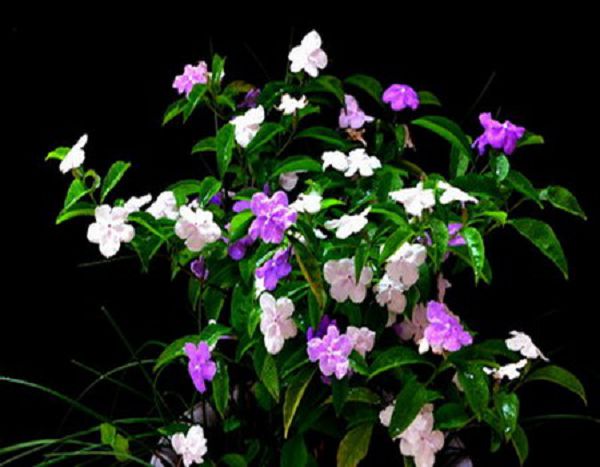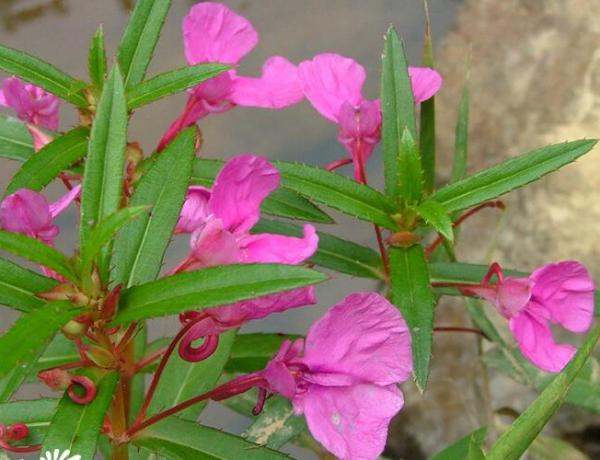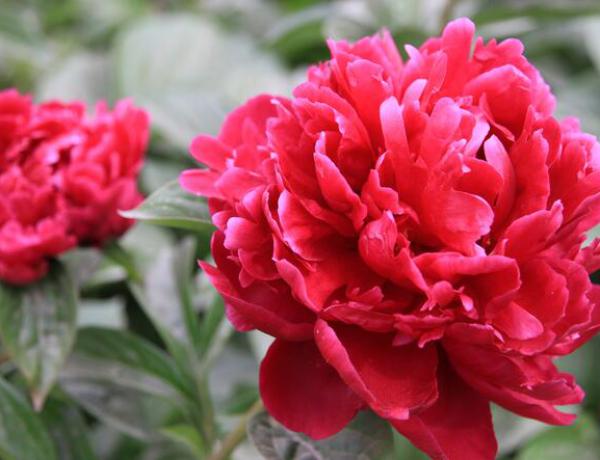Culture methods and matters needing attention of mandarin duck jasmine

Mandarin duck jasmine, also known as dichromatic jasmine, Solanaceae mandarin duck jasmine, native to tropical America. The plant is an evergreen shrub, about 1 meter high. Leathery, rectangular round leaf blade shining, leaves alternate, entire, short petiole. Flowers solitary or several gathered at the top of the stem, flowers magnificent and fragrant. The colors are different every day during the opening period: violet at first, gradually fade to blue, and finally almost white. The flower has 5 petals, open into a flat shape, with a shrinking white hole in the middle, flowering from April to October.
Mandarin duck jasmine is usually planted in pots, moved to cold room in winter and cultivated in open field in summer. Before planting, some mature organic matter can be applied as base fertilizer, the basin soil should be loose and breathable, after planting, the soil should be drenched with water, and the soil should be kept moist during the growth period, but do not accumulate water. Liquid fertilizer can be applied once a month. Apply hypophosphate and potassium fertilizer before flowering to promote flower bud formation and blossom more. Next, the editor will introduce to you:
[on the basin]
You can choose one of the following substrates for potting: vegetable garden soil: slag = 3RV 1; orchard soil: medium coarse river sand: sawdust (dregs) = 4RU 1v 2; or one of paddy soil, pond mud, and rotten leaf soil. Pour water once after putting on the basin and keep it in a shaded environment for a week. When transplanting the seedlings, first dig the planting hole, sprinkle a layer of organic fertilizer at the bottom of the planting hole as the base fertilizer (base fertilizer), the thickness is about 46.6 cm, and then cover a layer of soil and put it into the seedlings to separate the fertilizer from the roots and avoid burning roots. After putting it into the seedling, backfill the soil, cover the root system, and trample the soil with your feet and water it once. Choose a flowerpot of appropriate size, and the bottom hole of the pot should be covered with two tiles or thin foam sheets, not only to ensure that the soil is not washed out by water, but also to allow excess water to flow out in time. A layer of ceramsite or broken red brick is placed on the tile or foam to serve as a filter layer, about 2cm to 3cm thick.
[light] Mandarin duck jasmine likes a semi-shaded environment. It can give plenty of sunshine in autumn, winter and spring, but it should be shaded by more than 50% in summer. Put in indoor maintenance, as far as possible in places with bright light, such as well-lit living room, bedroom, study and other places. After indoor maintenance for a period of time (about a month), it should be moved to an outdoor place with shade (heat preservation in winter) for a period of time (about a month), so alternately.
[temperature] Mandarin duck jasmine prefers semi-overcast, well-ventilated environment, does not tolerate strong light and poor resistance to wind, and moves to outdoor sunny shelter before and after Qingming Festival. Put it in a cool and ventilated place or under a shade of 50% shade in summer to prevent direct sunlight, otherwise the leaves are easy to yellowing and scorching. Because it is native to the tropics and likes the environment of high temperature and humidity, it is very strict in winter. When the ambient temperature is below 10 ℃, it can not survive the winter safely when the ambient temperature is below 10 ℃. [1] in autumn, Frosts Descent moved back to indoor culture and placed it in a place with strong light.
[watering] the mandarin duck jasmine likes to be wet and is not resistant to waterlogging. It is required that the relative temperature of the air in the growing environment is 70-80%, the air relative humidity is too low, the lower leaves are yellowed and shedding, and the upper leaves are not glossy. The principle of dry and wet should be grasped in daily watering. In summer, the temperature is high and the air is dry. In addition to watering the basin soil, spray the foliar surface with clear water 2-3 times a day and sprinkle water around it to increase air humidity and reduce air temperature. Watering should be controlled in winter to keep the basin soil dry. It is best to control watering after each flower fade, when the new shoots grow to 75px or so, so as to promote flower bud differentiation and facilitate flowering every month.
Mandarin duck jasmine is a fertilizer-loving plant, which should be fertilized and watered frequently to ensure adequate nutrients and moisture. However, fertilization should be reasonable, too much or improper fertilization will lead to plant overgrowth, see leaves without flowers, or burn seedlings because of Feidoli. For potted plants, in addition to adding organic fertilizer when potting, proper fertilizer and water management should be carried out in the usual maintenance process. Spring, summer and autumn are the peak growing seasons of mandarin duck jasmine, so it is necessary to do a good job in fertilizer and water management.
[pruning] when the plant enters the dormant or semi-dormant period in winter, the branches such as thin, disease and insect, withered and overdense should be cut off. The branches can also be arranged in combination with cuttings. Mandarin duck jasmine should be pruned timely, on the one hand, the original old branches, withered branches, dry branches, diseased and weak branches should be thoroughly pruned, so as to reduce the consumption of nutrients and prevent plant aging; on the other hand, maintaining beautiful plant type is conducive to the emergence of new buds. After each flower fade, cut off the war flowers in time, and cut off some long branches by 1/3 or 1/2, so as to promote more branches to sprout, make the trees compact and beautiful, so that they can blossom more next month, and re-cut them after the last blossom at the end of autumn, that is, leave 2-3 buds per branch. Cut off the rest, and cut off the thin branches, introverted branches, disease and insect branches, so as to grow vigorously in the coming spring, beautiful branches and more blossoms.
[pest control]: the main pests of mandarin duck Laili are whitefly, leafhopper, shell insect, red spider and so on, occasionally leaf spot and powdery mildew. Generally, spraying with 1000 times of omethoate EC and 1000 times of thistle aphid can prevent the occurrence of insect pests; spraying with 65% zinc, 50% carbendazim, 75% chlorothalonil and 70% methyl thiophanate 500 times can prevent diseases.
Matters needing attention in summer culture:
① enhances air convection so that the temperature in its body can be released.
Put ② in half shade, or give it 50% shade.
③ sprays it properly, 2-3 times a day.
Matters needing attention in winter culture:
① moved to a brightly lit place for maintenance.
② is outside. You can wrap it in film for the winter, but you have to uncover the film every two days when the temperature is high at noon to let it breathe.
- Prev

Culture methods and matters needing attention of Impatiens balsamina
Culture methods and matters needing attention of Impatiens balsamina
- Next

How to raise peonies? What does a novice need to pay attention to when raising peonies?
How to raise peonies? What does a novice need to pay attention to when raising peonies?
Related
- Fuxing push coffee new agricultural production and marketing class: lack of small-scale processing plants
- Jujube rice field leisure farm deep ploughing Yilan for five years to create a space for organic food and play
- Nongyu Farm-A trial of organic papaya for brave women with advanced technology
- Four points for attention in the prevention and control of diseases and insect pests of edible fungi
- How to add nutrient solution to Edible Fungi
- Is there any good way to control edible fungus mites?
- Open Inoculation Technology of Edible Fungi
- Is there any clever way to use fertilizer for edible fungus in winter?
- What agents are used to kill the pathogens of edible fungi in the mushroom shed?
- Rapid drying of Edible Fungi

